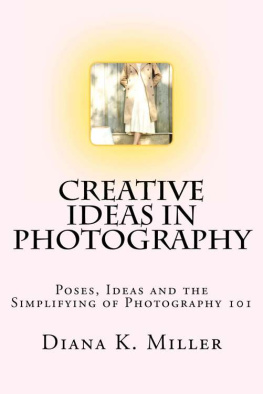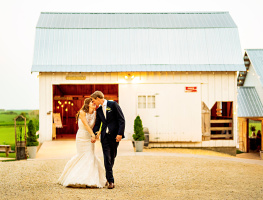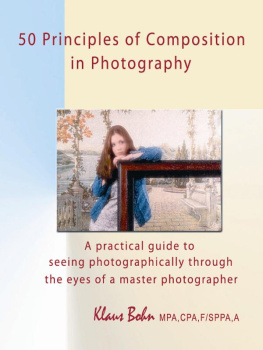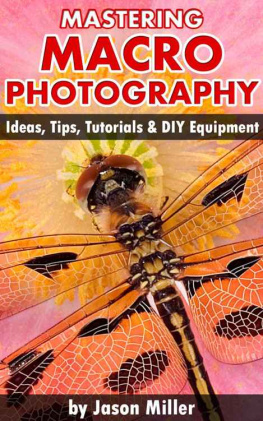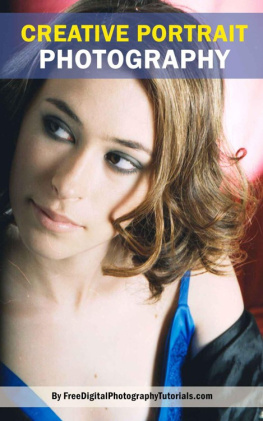ISBN-13: 9781491072202
DEDICATION
Many thanks to Anna M. Streety, Brian & Cassandra Cornwell, Brad & Tera Nicole Baccus, El Torito & Casey Ayala & Eric Taylor with Taylored For You Photography

POINT OF VIEW
1.1 CLIENT COLLABORATION1.2 EXAMPLE POSES
1 POINT OF VIEW
The objective of this book is to show you how to go beyond family portraits and how to start to excel in other areas of photography that are similar to family portraits.
The idea that photography is grabbing a camera and clicking away with very little effort doesnt seem true in the beginning, especially when youre learning how to work with a camera that has a ton of functions that you just arent used to. This book is going to help you implement your ideas on a single subject.
The first thing that you need to understand is this: do not go searching on the internet for your poses. A great photograph has to do with many factors. A pose is only part of many equationsthat go into a great photograph.
A few ideas to think about when creating a great photograph for instance is lighting. Lighting can make or break a photograph. Itsextremely important that you experiment with a friend or family member before attempting to call yourself a professional. Remember, a client hires you for more than the camera. The best way to experiment with lighting if you dont yet have access to a beginners lighting kit is to get flashlights and/or any indoor lighting will be great to experiment with. You may be able to take great photographs outside, but what about inside? Have you thought about what you would do at an event with low lighting and how your camera would react? How would you adjust the settings? You should be familiar with these ideas before attempting any event - especially weddings where low light is common. Software can fix a lot of problems with lighting, but your client isnt going to want to wait a months for you to figure out how to fix it. You need to be proficient with professional grade photographers software. Do not cut corners. You get what you pay for, so please do not expect it to come cheap.
Getting back on the topic of poses. Always remember that you should be very comfortable with your equipment before taking on a professional photographers title. If you say professional your client is not going to accept excuses as to why his or her photographs are blurry, grainy, dark, bright, over saturated and some are even picky when it comes to things beyond your control. For instance, his or her photograph doesnt look right because his or her teeth are yellow.Not your fault right? Wrong. Professional means professional. Youve got to fix the obvious flaws within a photograph.
Poses can get you pretty far - with the right client, attire, makeup and location. Some clients dont mind being picked up or thrown in the air, however others arent as outlandish. Try to get to know your client before hand. Pass a few ideas and see what poses they like. Never assume the client wouldnt like your choice of poses.
Youd be surprised at the clients that want a photographer who is up for anything.
Ive included a lot of photographs in this book with the permission of my clients. Which brings me to another important aspect of photography. If you choose to upload, share, print, scan, fax or make public any photograph you must have permission by the client in order to do so. Your insurance company would not be very happy with you otherwise. Just a little FYI (for your information.)
Every photograph you take will really be more about who you are. Your clients will see who you are within the photographs you take for them. Show off who you are, but deliver what they want. There is a common balance and any good photographer can find that balance easily. Dont be shy, be outgoing. Be what you would want your photographer to be. Take charge. The outcome of your photographs is from your point of view.
2 COLLABORATING WITH YOUR CLIENTS
I hit on collaborating in the last page and there are a lot of things that you really need to make sure you work on in the beginning. What questions will you be asking your clients when you sit down with them for the first time? Your answer is anything you would want a photographer to ask you. Put yourself in the position of the client. For instance there is a laundry list of questions you should ask a Bride and Groom whove come for a consultation. While at the consultation the photographer should always bring a contract. The contract protects both you and the client should anything go wrong. Always prepare a contract through reputable legal council. The protection the contract offers is a lot cheaper than hiring legal council when a problem arises after the fact.
After youve prepared the contract with reputable legal council and have begun the process of collaboration with your Bride and Groom you should be asking the obvious questions in the beginning. What are the clients names? Remember, its important to get the full name of the bride and groom. If the bride has been married before make sure you are using her maiden name, not her previously married name. Some people continue to use their prior name for whatever reason they so choose.
What day and time will the couple be marrying? This one question can easily lead to many others, such as, What time would you like me to arrive. Once again, this is important. You do not want to arrive at an event at the precise moment the event is to begin. When I shoot a wedding I am always there at least two to three hours ahead of time. There is no good excuse when you are late to an event. You have plenty of time if you prepare for the worst in advance. Another good question to ask in regards to time is the time in which the bride and groom are to arrive. How will the bride and groom arrive? How will they leave?
Never forget to ask about the rehearsal. If at all possible a good photographer will always attend the rehearsal for FREE. The rehearsal is the perfect opportunity for the photographer to become acquainted with the venue as well as the guests. The attendees are much easier to work with on the big day when theyre familiar with who you are. You can also take the opportunity after the rehearsal to introduce yourself or lay out business cards for the next day. Always ask the bride and groom if you can place business cards out and where you should place them.
Where is the location of the event? This is one of the biggest problems with photographers and the like. Once you have the name, address and phone number of the venue it is highly imperative that you print out a physical copy of the directions. Do not rely on a GPS that could fail at any given moment. Do not rely on a cell phone. Paper copies are always best and should be easy to keep up with in the clients file.
How is the payment going to be made? This may seem pretty simple, but tact is everything. You really should make sure that payment is made before the day of the wedding, unless another person at the event is going to be designated to handle the payment for them. Do not ever confront the bride or groom on the day of the wedding to discuss payment. If you have not made arrangements before hand you will have to wait until the couple arrives back from the honeymoon. You are bound to get thrown out of any venue by any family member at any given time by asking about payment during a wedding. Your contract should specify all payment criteria.
How many bridesmaids and groomsmen will there be? This is highly important. You will need to make sure that you account for every person in the bridal party. If you have an extra large wedding party youll need more batteries and memory cards for the camera and flash.

